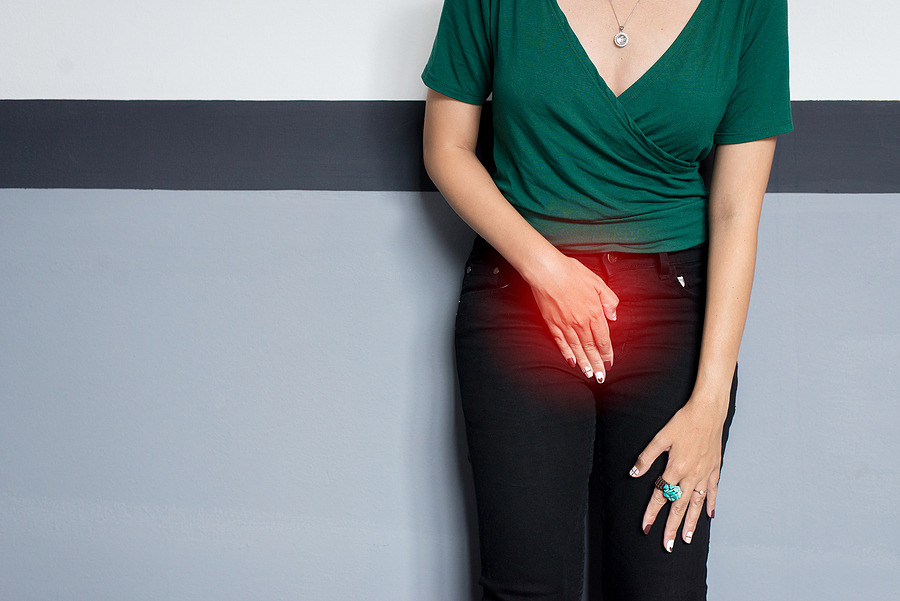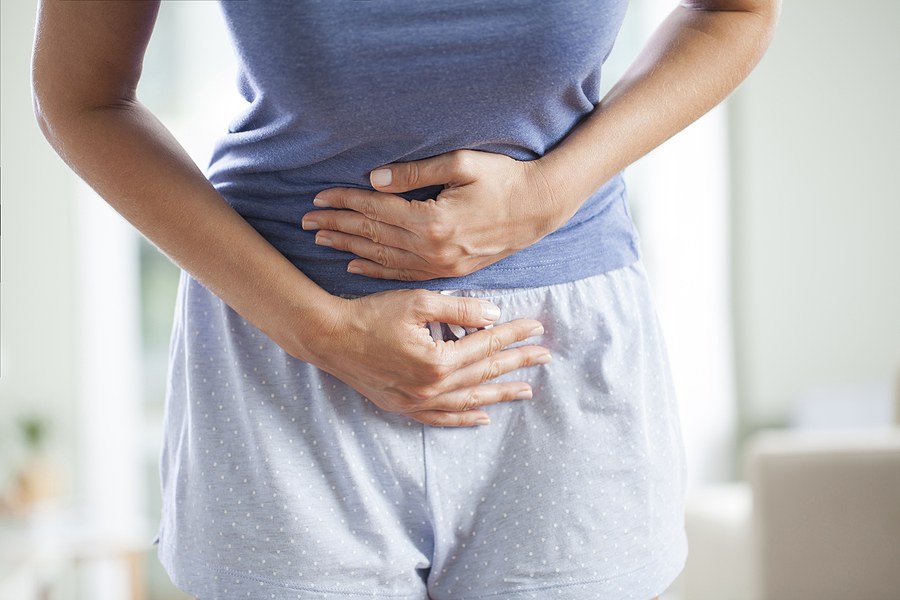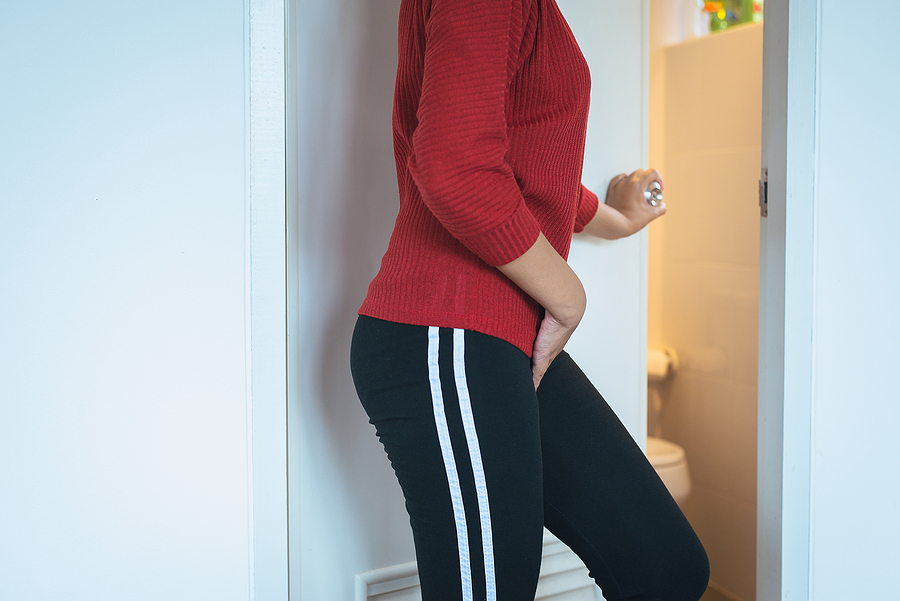Updated 10/25/2020
Don’t just live with urinary incontinence — learn about the causes of incontinence so you can move forward
In this article, I’ll discuss the following topics:
- What is female urinary incontinence?
- The anatomy of the pelvis
- 4 main types of incontinence/bladder problems
I remember the night I was at a charity event and a friend introduced me to a group of eight women ranging in age from 35 to 50. When one asked what I was working on and I told them I was currently writing about urinary incontinence in women, I couldn’t believe their reactions!
Every single one of them had a story to tell. One had to leave her aerobics class after her shorts got soaked. Another abandoned a grocery cart full of food in the check-out line to sprint for the public bathroom. Another organized her day around easy access to the toilet.
Every woman in that group (some were mothers, others were not) had some experience of losing bladder control. Most seemed to think it was an inevitable part of aging — complete with the requisite adult diapers, medications or incontinence surgery.
It’s no wonder they thought that. The ads for both medications and adult diapers certainly send that message. These ads are often so catchy, they make the problem seem lighthearted and insignificant (remember the old “gotta go right now” jingle?).
But anyone who has experienced these issues knows there’s nothing fun about it! Aside from the embarrassment factor, letting access to a bathroom run your life means you can miss out on a lot.
Stress incontinence, overactive bladder (OAB, also known as urge incontinence), or a combination of the two are extraordinarily common for women — but nobody wants to talk about them.
In the past, traditional medicine viewed incontinence as primarily a men’s issue. In fact, almost twice as many women deal with the problem than men. Statistics suggest that up to 1 in 2 women have problems with incontinence. And my personal experience is that most of the women I talk with have dealt with the issue at some point in their lives.
The onset of menopause, in particular, can make bladder control issues leap from moderate (or nonexistent) to severe. Women who have not given birth can be particularly caught off guard by incidents of incontinence.
Women are so conditioned to suffer in silence that they often don’t bring up the topic of urinary incontinence at all – even when they come to see me for their annual visits!
And if they’re talking about it with family or friends at all, it’s to make jokes about how they can’t laugh or sneeze without peeing, like it’s not a real problem. But it is!
I make it a point to ask my patients about incontinence, and let them know they don’t have to just get used to it. As we age, we may not be able to avoid incontinence entirely, but it is certainly treatable.
And that doesn’t have to mean surgery or medication! There are many very effective alternative methods both for prevention of problems and relief when they develop.
First, it’s important to understand what female urinary incontinence is, and the different conditions that can be at the root of the problem.
What Is Female Urinary Incontinence?
A sudden urge to go, leaking urine, and frequent urination are all forms of urinary incontinence, which is generally defined as a lack of bladder control.
While there are many causes, the most basic is a gradual weakening of the pelvic nerves, organs and smooth muscles that are meant to work together to control urination.
The bladder itself is a sac that stores urine from your kidneys. When it’s full, pelvic nerves send a signal to the brain that you have to “go.”
Your pelvic muscles, especially the sphincter of the urethra, clench, and “hold it” until you get to the bathroom. Once you’re there and safe, your brain tells the sphincter muscles to relax and your bladder empties.
Ideally, when the bladder is empty, the sphincter muscle closes to keep urine in the bladder. It then remains closed until the next time your brain sends the signal that you are ready to use the bathroom. With urinary incontinence, something happens to disrupt this process.
Believe it or not, the muscle anatomy “down there” is still not completely understood by modern medicine. We do know it’s an intricate and amazing arrangement of dozens of muscles which keeps things in and lets them out as necessary.
Naturally, the female pelvic floor is much more complex than the male pelvic floor because women have babies.
But a lot can change in the course of a lifetime. Inner pelvic muscles stretch and atrophy with age, pregnancy, gravity and trauma. Muscles can lose their elasticity with lack of use and loss of estrogen.
Organs actually move around, often pressing on the bladder itself. In some cases the bladder or urethra may become damaged or chronically inflamed and malfunction. Scarring from surgery, injury or infection may disrupt the natural alignment of the organs inside the pelvic area.
And when you think about it, which of us doesn’t experience several of these factors over time?
House beautiful: the anatomy of the pelvis
Have you ever noticed the anatomical chart in your healthcare provider’s office of a woman’s internal organs?
In that image, all of our parts are stacked neatly and well-supported within cushioning bands of smooth muscle. The vagina and the uterus nestle snugly between the urethra and bladder in front and the rectum and colon just behind.
As noted above, in the real world that anatomy may not remain so tidy. Some key ideas to keep in mind when thinking about urinary incontinence are:
- This elegant anatomy relies on the strength and tone of our pelvic muscles and ligaments, particularly the pelvic floor and perineum, to keep everything in its proper place.
- There is a lot of complexity in a small area — where our urinary tract, our reproductive tract, and our intestinal tract all converge. Changes in one of these systems can and do affect another.
- The bladder — and all the pelvic tissues and organs — are exposed to so many potential adverse developments, from posture to digestive problems. Some of these are inevitable as we get older.
4 Main Types of Incontinence/bladder problems
To determine the best options for relieving the problem (sorry for the pun, but we have to keep our sense of humor!) we should explore the different types of incontinence that women experience. There are four main types at play, each with distinctly different root causes.
1. Stress urinary incontinence (SUI), also called light bladder leakage (LBL), is related to the weakening of the pelvic floor resulting in pressure (or stress) on an otherwise fully functioning bladder.
One minute you’re laughing, sneezing or coughing, the next moment your underwear is wet. I know very few women who have not experienced some degree of stress incontinence at some point or another.
Exercise (particularly jumping), orgasm, and even hearing running water can trigger it — often with greater regularity after menopause.
It’s true that pregnancy and childbirth and pregnancy are frequently to blame for stress incontinence, but I also see a lot of women with stress incontinence in my practice who have never borne children.
2. Urge incontinence (UI) or overactive bladder (OAB) is a sudden, uncontrollable need to go, even if you just went ten minutes ago. It’s a result of uncontrolled contractions of the bladder muscle (called the detrusor) caused by a disruption in communication between the bladder and the brain.
This happens due to inflammation of the bladder lining, infection, injury, and natural atrophy that comes with age, among other reasons.
Waking up once to several times at night to pee, called nocturia, is a common OAB complaint, as is accidental wetting due to an unstoppable urge to release.
Sometimes overactive bladder is the result of overflow incontinence. OAB is also a common health issue for those with diabetes, multiple sclerosis or who have had a stroke.
3. Mixed incontinence is exactly what it sounds like – a combination of both stress and urge incontinence.
People with mixed incontinence deal with both the frustration of leakage upon physical exertion and an urgent need to go frequently. In these cases, it’s especially important to examine what is behind the leaks and urges, to determine the best course of action for managing the issue.
4. Overflow incontinence occurs when you can’t evacuate all the urine in your bladder because muscle tone is weak or you have a blockage. Symptoms of overflow incontinence include dribbling, urgency, hesitancy, straining, a weak urine stream or low urine production even though your bladder feels full.
It’s more common in men, but overflow incontinence can occur for women as well, particularly those with diabetes, neurological disorders and/or an underactive bladder.
Once you and your healthcare provider have a better idea of what type of urinary incontinence you’re experiencing, you will have a better chance at getting to the root causes and deciding on the best form of treatment.
Prescription medications for urge incontinence can either relax the detrusor muscle (e.g., Sanctura) or block the nerve impulses that prompt the bladder to contract (e.g., Detrol), which can be helpful for OAB, but they do not relieve symptoms of stress incontinence.
Medications can also cause many side effects, including dry mouth, constipation, headache, blurred vision and dizziness, to name a few.
Surgery, catheters and medical devices are invasive and can carry risks as well. That’s why I recommend that women try natural treatments and solutions first.





